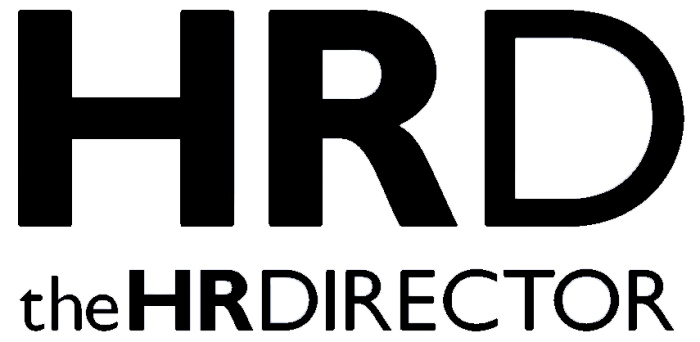Employee recognition has never mattered more than in today’s workplace. That’s because employees want to feel valued—especially in the context of remote or hybrid working. From small gestures to meaningful initiatives, thoughtful appreciation can have a lasting impact. Plus, as the days get longer and sunnier, a little extra vitamin D can go a long way in boosting morale.
In research conducted by Deloitte, recognition is highly correlated with improving employee engagement, which in turn improves job performance. Research indicates that employee engagement, productivity, and performance are 14% higher in organisations with recognition programs than those without.
A well-structured recognition system boosts morale, increases employee engagement, and fosters loyalty. Yet, many organisations still struggle to integrate meaningful appreciation into their daily operations.
Why Employee Recognition Works
Employee recognition is a powerful tool for building motivation, fostering loyalty, and driving performance. When employees feel appreciated, they are more likely to stay engaged and committed to their roles. Recognition taps into a fundamental human need: the desire to feel valued and acknowledged.
A simple gesture can have a significant impact. Shoutouts—public expressions of appreciation—are an easy yet effective way to reinforce positive behaviours. Whether in a team meeting, a company-wide email, or a workplace messaging platform, recognising someone’s hard work in real time fosters a culture of appreciation.
Encouraging peer-to-peer recognition can amplify this effect. Employees who celebrate each other’s successes create a supportive work environment where contributions are valued by both leadership and colleagues. Implementing a structured shoutout system, such as a dedicated section in team meetings or a recognition board in communal areas, ensures appreciation becomes a regular part of workplace culture.
These are the key benefits we’ve seen from focussing on building a positive employee recognition culture:
Boost to Morale and Job Satisfaction: Recognition creates a positive feedback loop. Employees who feel appreciated are happier in their roles, leading to increased job satisfaction, overall morale, and stronger motivation. This, in turn, enhances productivity, teamwork, and long-term commitment to the organisation’s success.
Encourages Higher Productivity: Acknowledging employees for their contributions motivates them to maintain or exceed their performance levels. It also inspires others to strive for similar recognition, fostering a culture of excellence, continuous improvement, and shared success across teams and departments.
Strengthens Team Dynamics: Public recognition fosters a sense of camaraderie, trust, and mutual respect among team members, enhancing morale, motivation, and overall engagement while contributing to a more collaborative, inclusive, and supportive work environment where individuals feel valued, empowered, and inspired to excel together.
Reduces Turnover: Employees who feel valued and appreciated are less likely to seek opportunities elsewhere. Consistent recognition reinforces their sense of belonging, loyalty, job satisfaction, and emotional connection to the organisation, fostering long-term commitment, stability, and a positive workplace culture that encourages growth and retention.
Practical Ways to Implement Employee Recognition
Recognition doesn’t have to be complicated or expensive to be effective. There are many actionable strategies for fostering a culture of appreciation that will get you heading in the right direction in no time, without stretching your budget.
Adopt Technology to Bridge the Gap
Leverage technology to streamline and amplify your recognition efforts. Use platforms designed for employee recognition that work natively within communication channels like Slack or Teams. These tools allow employees to give and receive recognition in real time, without leaving the flow of their work, ensuring that no effort goes unnoticed.
Tip: Consider tools that use gamification features like badges, leaderboards, and points systems to make recognition more engaging.
Encourage Peer-to-Peer Recognition
Recognition shouldn’t always come from the top down. Peer-to-peer recognition fosters camaraderie and inclusivity, empowering employees to acknowledge each other’s contributions. Implement easy-to-use platforms or informal shout-out channels where employees can celebrate each other’s efforts. Encouraging a culture of mutual appreciation strengthens team bonds and boosts overall engagement.
Customise Recognition to Reflect Your Company Values
Tie recognition to your company’s core values. When employees are recognised for actions that align with these values, it reinforces a sense of purpose and shared mission. Encourage leaders and peers to highlight specific behaviors that exemplify company values in their recognition messages. This not only makes appreciation more meaningful but also helps embed these values into daily work culture.
Example: If collaboration is a core value, highlight instances where teams worked together effectively to achieve a goal.
Make Recognition Inclusive and Global
In dispersed businesses, it’s vital to ensure that recognition reaches all corners of the organisation. Celebrate cultural diversity by tailoring recognition to regional norms and preferences. In a hybrid work environment, ensure recognition is equally visible and impactful for both remote and in-office employees. Use digital tools to celebrate achievements in real time and create inclusive moments that bridge physical distances.
Tip: Create global campaigns like “Employee of the Month” but ensure the criteria and celebrations are culturally sensitive and inclusive.
Offer Meaningful Rewards
Recognition can be paired with rewards that resonate with employees. These can include monetary incentives, gift cards, extra time off, or even opportunities for professional development. Think of rewards as the cherry on top, with the recognition acting as the sundae!
Best practice: Let employees choose their rewards through a flexible system. Personalised rewards show that the organisation values individual preferences.
So, what next?
Building a strong recognition culture in your company requires intentional effort and the right strategies. By leveraging technology, encouraging inclusivity, and continuously evolving your approach, you can create an environment where every employee feels valued and motivated to contribute their best.
Ultimately, a recognition-rich workplace does not happen overnight—it requires consistency, authenticity, and commitment. By integrating both informal shoutouts and structured employee rewards, businesses can cultivate a culture where employees feel valued, motivated, and inspired to contribute their best work.
A simple ‘thank you’ can go a long way, but a culture of appreciation will transform your workplace for the better. Start small, stay consistent, and watch your organisation thrive.
If you’re interested in improving the employee recognition culture in your organisation, check out Juno Shoutouts – the gamified recognition app, native to Slack at withjuno.com/shoutouts.









